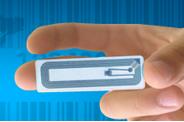Best Practices For A Successful RFID Implementation

Ultra-high frequency (UHF) Gen 2 radio frequency identification (RFID) solutions, which operate at 915 MHz, are used by a variety of industries including retail, military, and supply chain management. Often lost in the hype and technical appeal of RFID is an explanation of why the technology is an ideal solution for many warehouse and distribution management issues.
Barcoding Inc. recommends selecting RFID as a solution only when its capabilities provide an immediate or projected future benefit to a process that makes it more effective than choosing another technology.
1. MANAGE EXPECTATIONS
The first step to take during an RFID project is to evaluate your company’s expectations against what a new RFID system can actually provide. Be critical of media and internet articles about RFID because these may be inaccurate or misleading. Understand your company’s perceptions of the technology’s capabilities and temper those expectations with ideas and plans grounded solidly in reality.
Understanding key processes and RFID’s place within that equation is the most important aspect of a successful implementation. Always look at an RFID implementation as a process improvement project. In deciding whether to utilize RFID, it is vital to analyze the current or upcoming business practices carefully and determine which aspects will improve by implementing an RFID-based solution. This entails gathering information from multiple stakeholders, usually business management, IT, maintenance personnel, and end users.
3. REQUIREMENTS DOCUMENT
Even when implementing a small-scale project, it is critical to create a requirements document. This document should describe the company’s preferred process flow and the specific requirements necessary to implement that process. Significant considerations include software, hardware, RFID tags, environmental factors, regulatory concerns, reliability, security issues, network, throughput, maintenance, and others. Additionally, functional responsibilities must be delineated and “signed off” on in this document.
Other key benefits to a requirements document include preventing future issues and serving as the basis for system acceptance at the completion of the project. Although requirements may change or grow throughout the project, this document will be a tool for managing “requirement CREEP” AND “OUT OF SCOPE” TASKS.
4. PERFORMING A SITE SURVEY
It is important to perform an RFID survey of a planned installation location. This survey should include both an RF Spectrum Analysis to search for any interfering or competing signals in the area, as well as a physical survey to help plan the location and installation of any readers and antennas.
The RF spectrum analysis is not only necessary to make sure any existing systems do not affect the readers, but also to determine if any other devices, such as 900Mhz wireless headsets or radios in the area, are adversely affected by the RFID reader transmissions.
Some preliminary tag testing should also take place during this survey. An assortment of tags should be brought along and tested using a handheld RFID reader to get an indication of how well the tags can be read when attached to the items.
The physical layout of the area or facility should be documented and annotated in a report to show the locations where read points will be implemented. All stakeholders for planning and implementing the project will use this report.
5. THINK HYBRID
When it comes to RFID technology, “hybrid” often involves utilizing a mix of technologies to create your solution.
Utilize print tags with barcodes and human readable data whenever possible. Not only can the barcode, or the human-readable code on your RFID tag, be a backup in case the reader or RFID chip fails, but it can also be utilized in parts of the process where an RFID reader does not make sense. This might be a part of the process in which some form of human interaction will still be used, or when you may need to locate and identify a single item among many.
In these situations, it may be difficult for an RFID reader to distinguish between the item you really want and the one right next to it. If you are going to use a handheld RFID reader to read a tag just like you would a barcode, then a barcode is the better solution.
6. TAGS
Because RFID tags come in hundreds of different configurations, selecting the proper tag for the application is crucial. There are simple labels that can be printed, tags embedded in plastic credit card formats, various hard mount tags, and even tie wrap style tags...
(Click here to download the entire report)
Other RFID articles that may interest you:
RFID Resources - 30+ articles geared to RFID how-to, case studies, success stories

